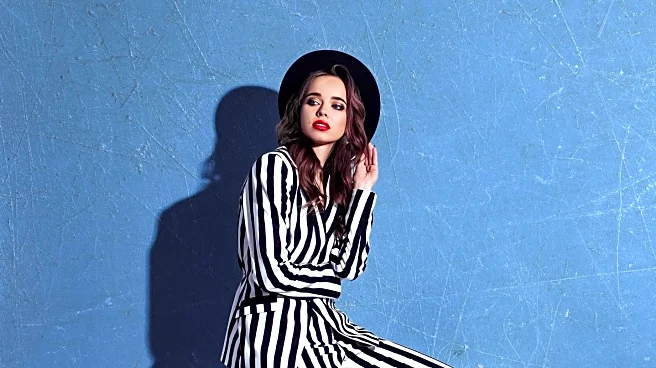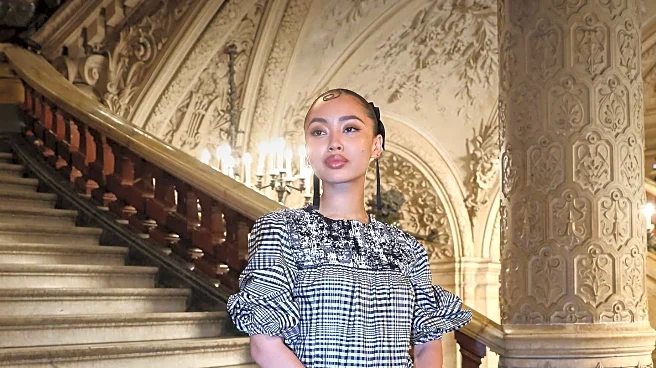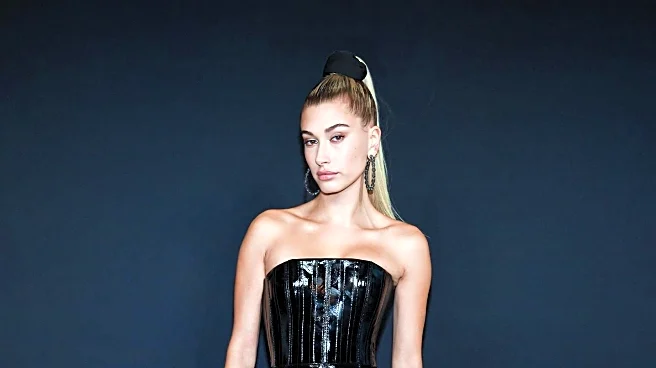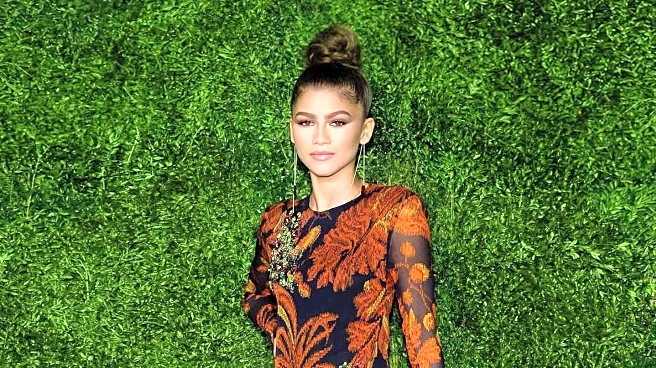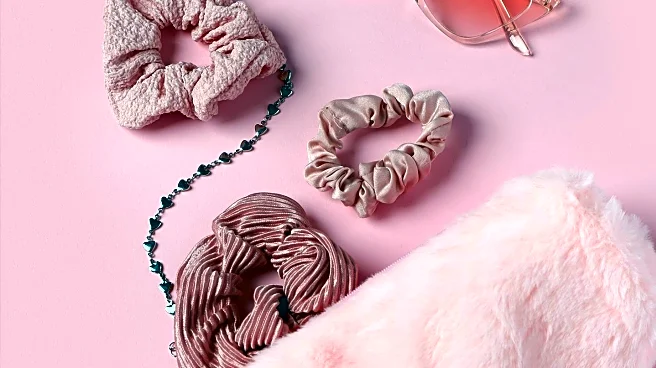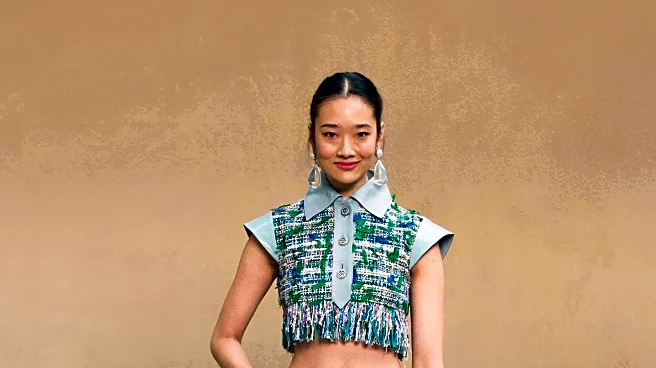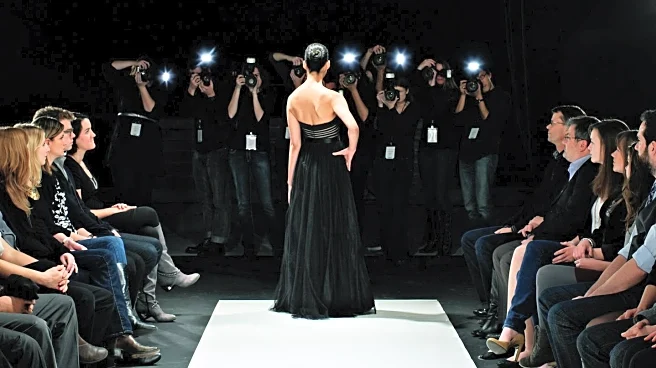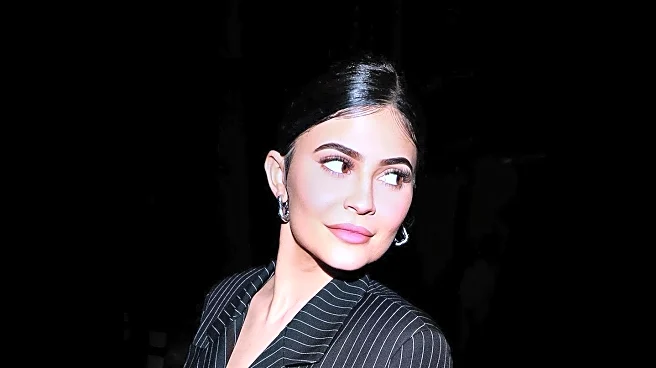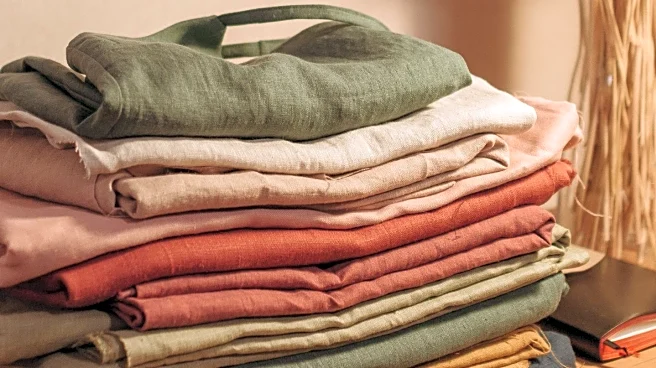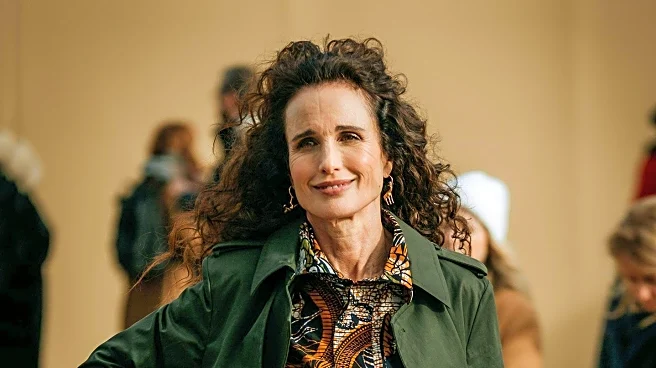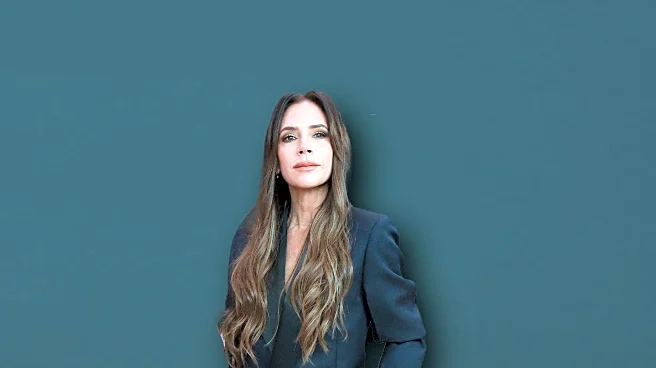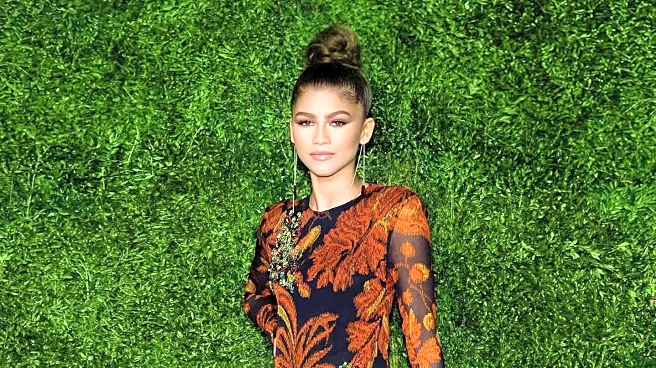What is the story about?
What's Happening?
Susan Szatmáry, a Stockholm-based accessories designer known for her collaborations with brands like & Other Stories and Byredo, has launched a new footwear line. The collection, introduced in Paris, includes five classic styles: two loafers, a slip-on, a strappy sandal, and a high-heel slingback. These designs incorporate hardware similar to that used in her bags, emphasizing a cohesive aesthetic. Szatmáry's approach focuses on classic styles, comfort, and cost efficiency, with prices ranging from 490 to 650 euros. The designer aims to offer an alternative to mainstream brands, appealing to customers seeking unique, high-quality products.
Why It's Important?
The launch of Susan Szatmáry's footwear line highlights a growing trend in the fashion industry where designers are expanding their product offerings to include complementary items. This move not only diversifies Szatmáry's brand but also caters to a market segment looking for distinctive, high-quality alternatives to mass-market products. By focusing on classic designs and comfort, Szatmáry addresses consumer demand for practical yet stylish footwear. This expansion could influence other designers to adopt similar strategies, potentially reshaping market dynamics and consumer expectations in the fashion industry.
What's Next?
As Susan Szatmáry's footwear line enters the market, it will be crucial to monitor consumer reception and sales performance. The success of this collection could encourage further expansion and innovation within her brand. Additionally, the response from competitors and the broader fashion industry may lead to increased emphasis on quality and functionality in product offerings. Suppliers and retailers might also adjust their strategies to accommodate the growing interest in independent labels, potentially impacting supply chain dynamics and retail partnerships.
Beyond the Headlines
The introduction of Szatmáry's footwear line underscores a shift towards sustainability and ethical production in fashion. By utilizing existing leathers and focusing on cost efficiency, the designer aligns with a broader movement towards responsible consumption. This approach not only appeals to environmentally conscious consumers but also sets a precedent for other designers to consider sustainable practices in their production processes. The emphasis on quality over branding may also influence consumer behavior, encouraging a more mindful approach to fashion purchases.
AI Generated Content
Do you find this article useful?
